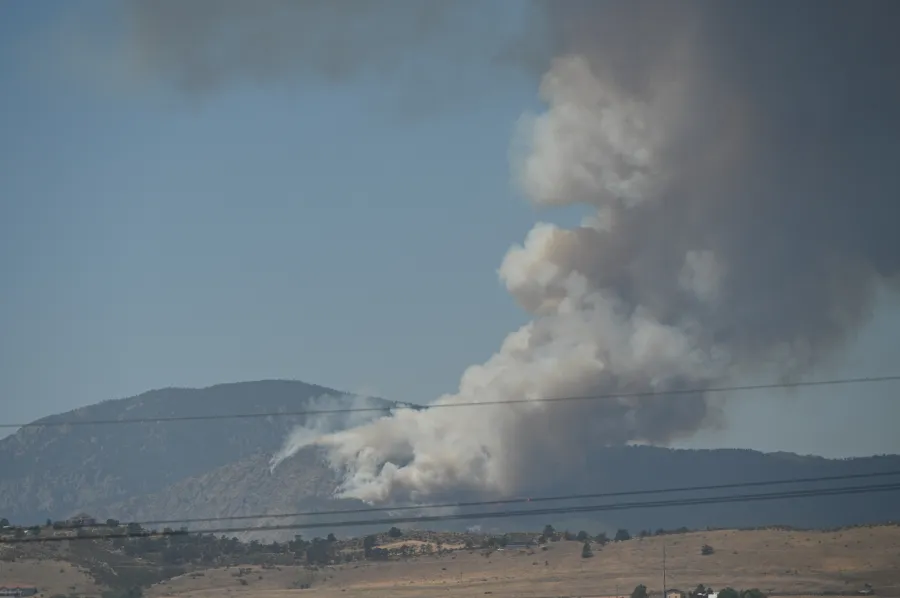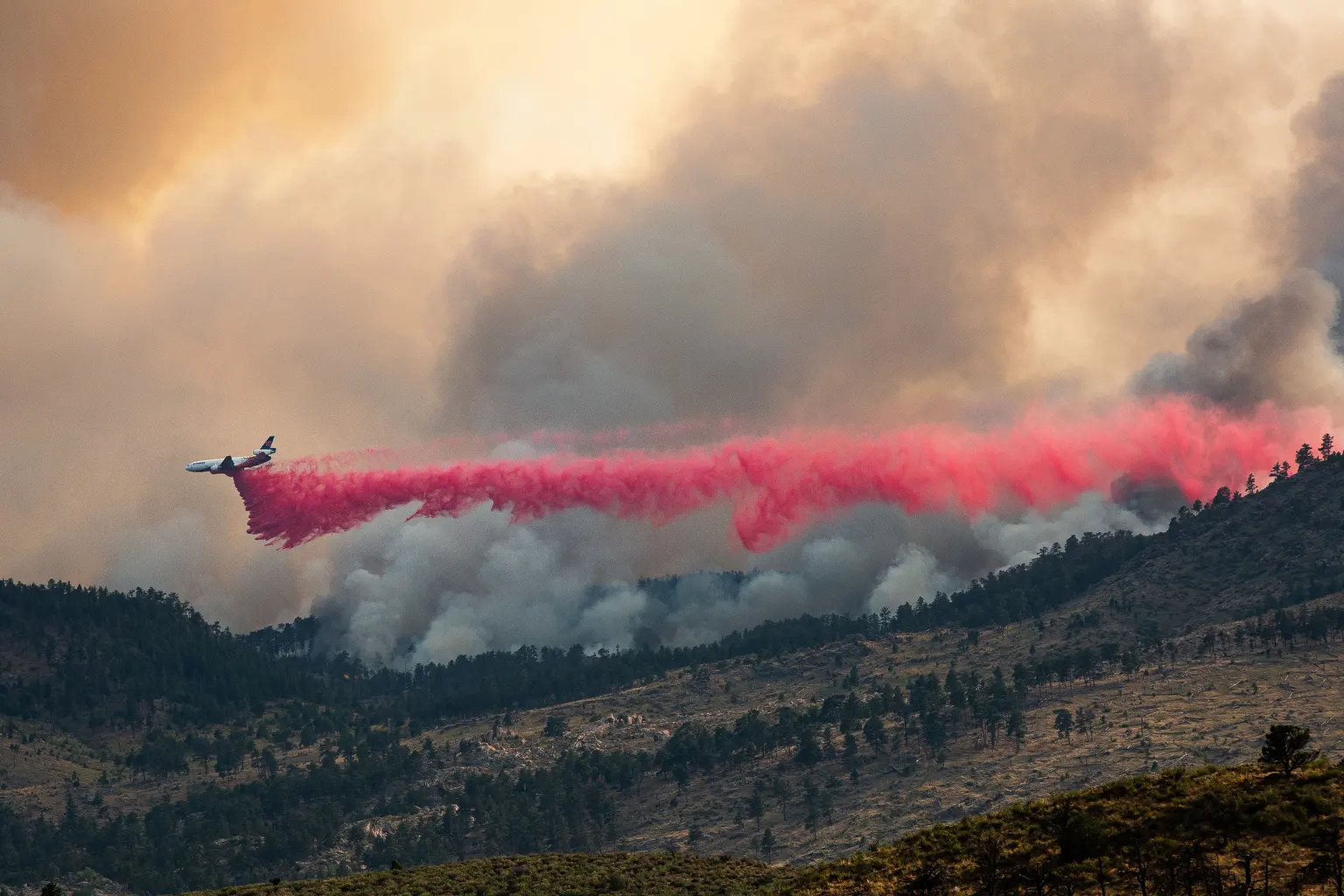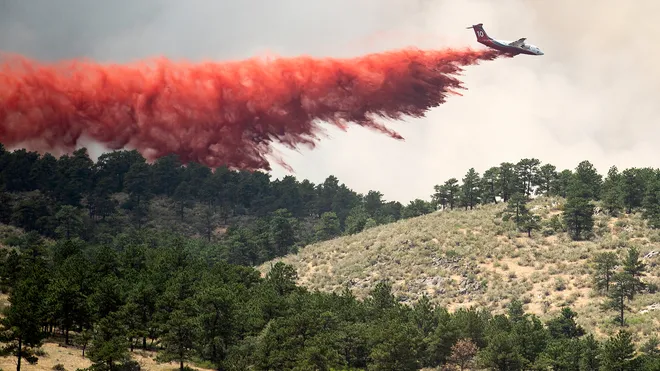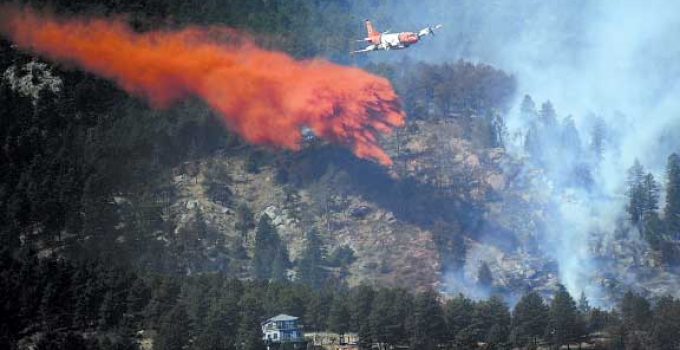The Loveland Fire, which erupted in the early hours of July 29, 2024, has become a devastating event for the small Colorado town of Loveland. This catastrophic wildfire has scorched thousands of acres, destroyed numerous homes, and forced mass evacuations, leaving the community grappling with unprecedented challenges. As firefighters battle the flames and residents seek refuge, the town’s resilience and unity are being put to the test.
The Outbreak and Spread of the Loveland Fire

The fire began in the dense forests surrounding Loveland, ignited by a combination of prolonged drought conditions, high temperatures, and strong winds. Local authorities reported that the initial spark might have been caused by a lightning strike, a common occurrence during Colorado’s dry summer months. Within hours, the fire spread rapidly, fueled by dry vegetation and gusty winds, making containment efforts extremely difficult.
Immediate Impact and Evacuations
As the fire spread towards residential areas, emergency services quickly issued evacuation orders for thousands of residents. The speed at which the fire advanced left little time for preparation, causing widespread panic and urgency. Evacuation centers were established in nearby towns, providing temporary shelter for displaced families. Despite these efforts, many residents faced the grim reality of potentially losing their homes and possessions.
Firefighting Efforts
Over 500 firefighters, including local crews and reinforcements from neighboring states, have been deployed to combat the Loveland Fire. Firefighting aircraft, including water-dropping helicopters and air tankers, have been instrumental in battling the blaze from above. On the ground, firefighters are working tirelessly to establish fire lines and protect critical infrastructure. However, the challenging terrain and volatile weather conditions have made their task arduous.
Environmental and Ecological Consequences

The Loveland Fire has not only devastated human settlements but also wreaked havoc on the local environment. Thousands of acres of forestland have been reduced to ash, resulting in the loss of habitat for numerous wildlife species. The fire’s intensity has also compromised soil stability, increasing the risk of erosion and mudslides in the aftermath. Environmental experts warn that the ecological recovery will take years, if not decades.
Community Response and Support
In the face of adversity, the Loveland Fire community has demonstrated remarkable solidarity. Local businesses, community organizations, and volunteers have rallied together to support those affected by the fire. Donation drives for essential supplies, including food, water, clothing, and medical aid, have been organized to assist evacuees. Social media platforms have played a crucial role in coordinating relief efforts and disseminating information.
Government and Official Response
State and federal agencies have also stepped in to provide assistance. Colorado Governor Jared Polis declared a state of emergency, unlocking additional resources and funding for firefighting efforts and relief operations. The Federal Emergency Management Agency (FEMA) has been working closely with local authorities to ensure that evacuees receive the support they need. Furthermore, the National Guard has been mobilized to assist in evacuation and firefighting efforts.
The Human Toll

While the material losses are significant, the emotional and psychological impact on residents is equally profound. Many families have lost their homes, cherished belongings, and, in some cases, their livelihoods. The uncertainty of not knowing when or if they can return home has taken a heavy toll on the mental health of evacuees. Local mental health services have been overwhelmed with requests for support, highlighting the need for long-term psychological assistance for those affected.
Future Prevention and Preparedness
The Loveland Fire has underscored the importance of wildfire prevention and preparedness. Experts emphasize the need for more robust forest management practices, including controlled burns and vegetation thinning, to reduce the risk of future wildfires. Additionally, community education on fire safety and emergency preparedness can play a vital role in minimizing the impact of such disasters. Building codes and land-use planning also need to consider fire risks more rigorously, ensuring that future developments are less vulnerable to wildfires.
Hope Amidst Destruction
Despite the devastation, there are glimmers of hope. Stories of bravery and selflessness have emerged, showcasing the best of humanity in times of crisis. Firefighters putting their lives on the line, neighbors helping neighbors, and the outpouring of support from across the country provide a beacon of hope amidst the destruction. The resilience of the Loveland Fire community is a testament to the human spirit’s ability to endure and rebuild.
The Road to Recovery Loveland Fire
As the flames continue to rage, the road to recovery will be long and challenging. Rebuilding lunatogel login alternatif homes, restoring the environment, and healing the emotional scars will require sustained effort and support. However, with the strength and unity displayed by the Loveland Fire community, there is confidence that the town will rise from the ashes, stronger and more resilient than ever before.
In conclusion, the Loveland Fire is a stark reminder of the destructive power of nature and the importance of preparedness and community solidarity. While the immediate focus remains on extinguishing the blaze and ensuring the safety of residents, the long-term recovery and rebuilding efforts will define Loveland Fire resilience. The support from local, state, and federal agencies, combined with the indomitable spirit of the community, will be crucial in navigating the challenges ahead.
Read More Article About “Château Lafite Rothschild: Bordeaux’s Prestigious First Growth“




